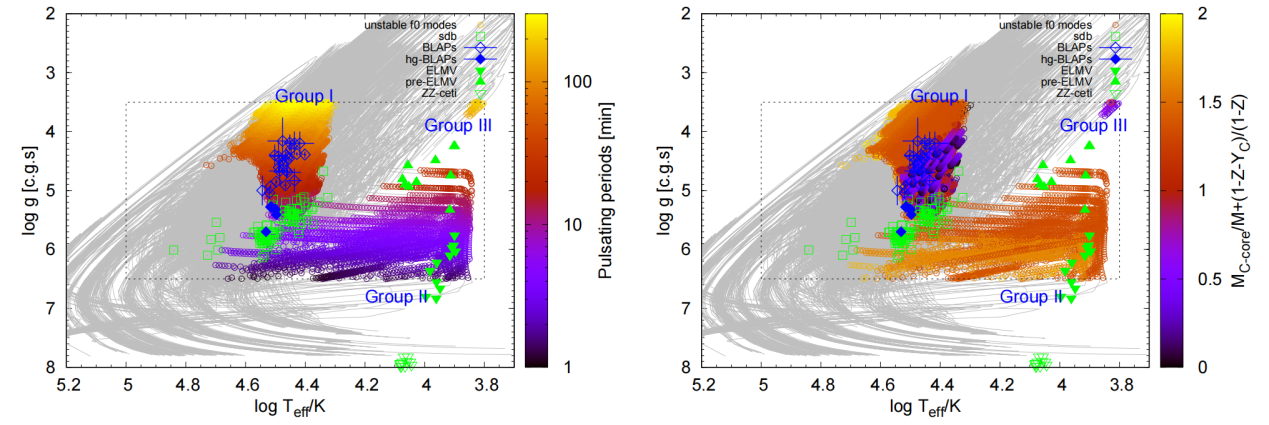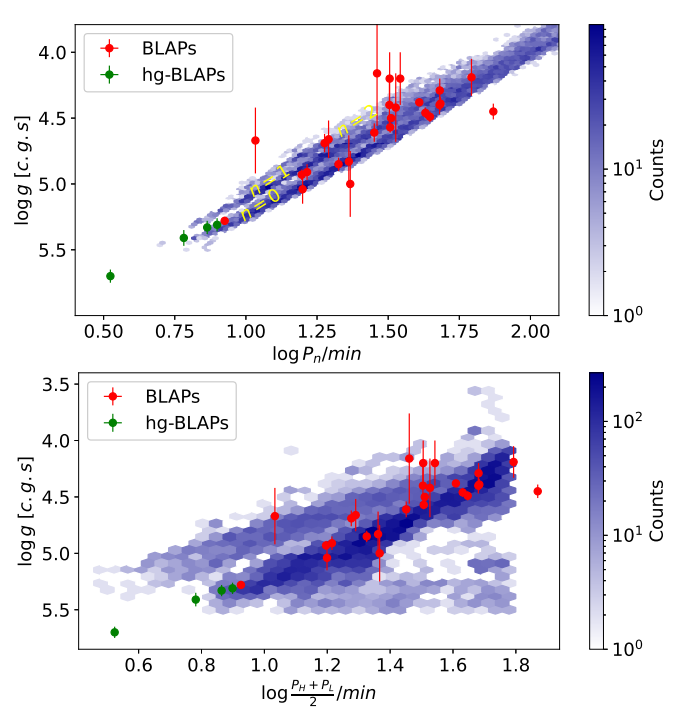A research team led by WU Tao and LI Yan of the Stellar Astrophysics Group at Yunnan Observatories, Chinese Academy of Sciences, has advanced the understanding of Blue Large-Amplitude Pulsators (BLAPs). BLAPs are a rare class of hot pulsating stars first identified in 2017. The team used comprehensive non-adiabatic asteroseismic modeling to explain the key observational characteristics of these stars.
The findings, published on 9th November 2025 in Monthly Notices of the Royal Astronomical Society (MNRAS), were noted by reviewers as being the most detailed and extensive study on the subject published to date.
BLAPs are defined by their high effective temperatures and large brightness variations. They are located near the boundary between B-type (sdB) and O-type (sdO) subdwarf stars on the Hertzsprung-Russell diagram and have relatively low surface gravities. Although their overall parameters are similar to subdwarfs, their unique pulsations point to different internal structures and evolutionary histories.
Building on the earlier work, which proposed that BLAPs are likely undergoing long-lived core helium burning, the team performed an advanced non-adiabatic asteroseismic analysis. This study systematically evaluated the effects of various physical inputs, including total stellar mass, helium core and envelope mass, the envelope hydrogen/helium abundance ratio, metallicity and chemical compositions (GN93, GS98, A09), opacity datasets (OP vs. OPAL), and the element diffusion and radiative levitation.
Their analysis revealed that metallicity is the dominant factor in pulsation excitation, while envelope thickness and the H/He ratio have minimal impact. The study indicates that if the observed pulsations are fundamental radial modes, the models can consistently explain the observed periods, their rates of change, and the stars' positions on the H-R diagram.
The theoretical models predict a narrow relationship between period and surface gravity, but the observational data shows more scatter. This suggests the potential for unmodeled dynamical or compositional variations, or an incorrect mode identification. Models using the OP opacity tables with the A09 metallicity composition performed best, while the inclusion of element diffusion or radiative levitation reduced model performance, indicating these processes may not be critical under current assumptions.
Overall, the theoretical analysis successfully reproduces all major observational features, including the distribution of excited models on the H-R diagram, period vs. period-change-rate trends, and surface H/He abundances. The exception is some kinematic properties.
The results show that BLAPs are stars with masses between 0.5 and 1.2 solar masses. The majority are evolving through core helium-burning phases, with a minority potentially undergoing helium-shell burning around a CO core. This supports the conclusion that BLAPs represent a population of helium-burning stars with long evolutionary timescales, typically clustered around 0.7–1.1 solar masses.
This work providesa theoretical basis and observational constraints for future studies into the evolutionary origin of BLAPs and for testing stellar theory.
The research was supported by the National Science Foundation of China (NSFC) Fundamental Science Center Program, the CAS Strategic Priority Research Program, the National Key R&D Program of China, and the Yunnan Provincial Basic Research Project.

Figure 1: Distribution of theoretically excited fundamental radial modes on the H-R diagram. Left panel: colored by pulsation period; Right panel: colored by evolutionary phase parameter (0–1: core He burning; 1–2: He shell burning). Image by WU.


Figure 3: Period–surface gravity (log g) relation. Upper panel: radial modes; Lower panel: non-radial l=1 modes, with period defined as the mean of the longest and shortest excited modes within the 3–60 minute band. Image by WU.
Contact:
WU Tao
Yunnan Observatories, CAS
e-mail:wutao@ynao.ac.cn